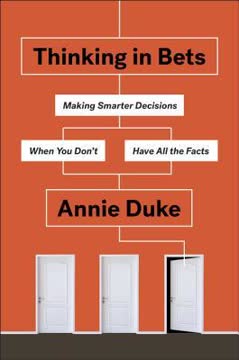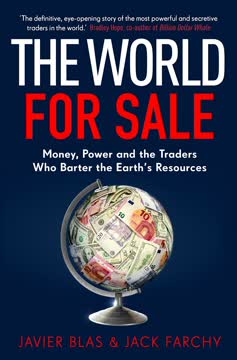Key Takeaways
1. Global economic power is shifting to emerging economies
For the first time ever China was the most important contributor to world growth over the year when measured in terms of market prices.
Emerging economies are driving global growth. This shift represents a fundamental realignment of economic power, with countries like China and India becoming major contributors to global GDP growth. The change is not just quantitative but qualitative, as these economies are moving up the value chain and developing their own multinational corporations.
Traditional economic relationships are being upended. Emerging economies are now often creditors to developed nations, reversing the historical norm. This has led to the accumulation of large foreign exchange reserves by these countries, which is changing global capital flows and influencing asset prices worldwide.
Key emerging economies:
- China
- India
- Brazil
- Russia
- South Africa
2. Financial markets are experiencing unprecedented structural transformations
The modern financial complex has morphed into something unrecognizable to many astute market veterans and academics.
Financial innovation is reshaping markets. The proliferation of new financial instruments, particularly derivatives and structured products, has dramatically altered the landscape of global finance. These innovations have reduced barriers to entry in many markets and increased interconnectedness across asset classes and geographies.
Traditional market dynamics are changing. The rise of "endogenous liquidity" – liquidity created within the financial system itself – has reduced the effectiveness of traditional monetary policy tools. This has led to periods of excess liquidity followed by sudden liquidity crunches, as seen in the 2007-2008 financial crisis.
Key financial innovations:
- Credit default swaps
- Collateralized debt obligations
- Exchange-traded funds
- High-frequency trading algorithms
3. Traditional economic models and indicators are becoming less reliable
Reality must take precedence over public relations, for Nature cannot be fooled.
Economic anomalies are becoming more frequent. Traditional relationships between economic variables, such as interest rates and inflation, are breaking down. This has led to "conundrums" that challenge conventional economic wisdom and make forecasting more difficult.
New analytical approaches are needed. Investors and policymakers must look beyond traditional economic indicators and models to understand the new realities of the global economy. This includes incorporating insights from behavioral economics, complexity theory, and other disciplines to gain a more holistic view of economic dynamics.
Examples of economic anomalies:
- Low inflation despite low unemployment
- Negative interest rates in some developed economies
- Persistent global trade imbalances
4. The journey to a new economic equilibrium will be bumpy and uncertain
When the music stops, in terms of liquidity, things will be complicated. But as long as the music is playing, you've got to get up and dance. We're still dancing.
Market volatility will increase. As the global economy transitions to a new equilibrium, there will be periods of heightened uncertainty and market turbulence. This will be driven by the clash between established economic structures and emerging realities.
Systemic risks are evolving. The interconnectedness of global markets and the proliferation of complex financial instruments have created new sources of systemic risk. These risks may be less visible and harder to manage than traditional economic and financial risks.
Potential sources of market disruption:
- Sudden shifts in capital flows
- Geopolitical tensions
- Technological disruptions
- Climate change-related events
5. Investors must adapt their strategies to navigate the changing landscape
Those that did best the last few years were those who bought liquid assets and levered up. The next few years will belong to those who prudently manage risk.
Asset allocation needs to be rethought. Investors should consider increasing their exposure to emerging markets and alternative asset classes to reflect the changing global economic landscape. This may include allocations to sovereign wealth funds, infrastructure investments, and other non-traditional assets.
Risk management is paramount. Given the increased complexity and interconnectedness of global markets, investors must place a greater emphasis on risk management. This includes developing more sophisticated approaches to tail risk and implementing robust portfolio hedging strategies.
Key considerations for investors:
- Diversification across geographies and asset classes
- Increased focus on liquidity management
- Implementation of tail risk hedging strategies
- Incorporation of ESG factors into investment decisions
6. Policy makers face challenges in managing the transition and maintaining stability
Officials will face difficult choices when asked to react to the consequences of newly enabled market activities that go beyond the capacity of the financial system to accommodate and sustain them.
Monetary policy effectiveness is diminishing. Central banks are finding their traditional tools less effective in managing economic cycles and financial stability. This is leading to experimentation with unconventional monetary policies and a rethinking of central bank mandates.
Fiscal policy must adapt. Governments need to develop more flexible and responsive fiscal policies to address the challenges of the new economic landscape. This may include rethinking approaches to taxation, public investment, and social safety nets.
Policy challenges:
- Balancing growth and financial stability
- Managing global capital flows
- Addressing income inequality
- Promoting sustainable economic development
7. Risk management approaches need to evolve to address new complexities
Investors would be well advised to maintain a careful check on the strength and lag structure of these three circuit breakers, whose effectiveness also depends on the potential duration of the technical dislocation.
Traditional risk models are inadequate. The increased complexity and interconnectedness of global markets have rendered many traditional risk management models obsolete. Investors and financial institutions need to develop more sophisticated approaches that can capture tail risks and complex market dynamics.
Holistic risk management is crucial. Risk management should be integrated into all aspects of investment decision-making, rather than treated as a separate function. This includes considering a wider range of risk factors, such as geopolitical risks, climate risks, and technological disruptions.
Emerging risk management approaches:
- Scenario analysis and stress testing
- Machine learning and AI-driven risk models
- Real-time risk monitoring systems
- Incorporation of behavioral finance insights
8. Sovereign Wealth Funds are emerging as influential global financial players
SWFs are likely to gradually shift away from fixed-income investments and go toward higher-risk instruments and those that are deemed to offer stronger protection against inflation.
SWFs are reshaping global capital flows. As these funds grow in size and sophistication, they are becoming increasingly important players in global financial markets. Their investment decisions can have significant impacts on asset prices and market dynamics.
Governance and transparency are key concerns. The growing influence of SWFs has raised concerns about their governance structures and potential geopolitical motivations. Developing transparent and accountable governance frameworks for these funds will be crucial for maintaining market confidence and preventing protectionist reactions.
Key characteristics of SWFs:
- Large and growing asset bases
- Long-term investment horizons
- Potentially strategic investment objectives
- Diverse investment strategies across asset classes
9. The proliferation of complex financial instruments poses both opportunities and risks
Securitization offers many advantages that are highly valued by the marketplace, and these will not go away any time soon.
Financial innovation creates new opportunities. Complex financial instruments, such as derivatives and structured products, can offer benefits in terms of risk management, liquidity, and capital efficiency. They allow for more precise allocation of risk and can facilitate access to capital for a wider range of entities.
Complexity increases systemic risks. The proliferation of these instruments has made the financial system more interconnected and potentially more fragile. The opacity of many complex products can make it difficult to assess and manage risks effectively, as demonstrated in the 2007-2008 financial crisis.
Key issues with complex financial instruments:
- Difficulty in valuation and risk assessment
- Potential for misaligned incentives
- Regulatory challenges
- Increased systemic interconnectedness
10. Multilateral institutions require reform to remain relevant in the new economic order
There is little disagreement on the needed enhancement of the IMF. Indeed, a common set of issues has emerged from the work done by the institution itself.
Governance structures need updating. Existing multilateral institutions, such as the IMF and World Bank, need to reform their governance structures to better reflect the changing global economic landscape. This includes giving greater voice and representation to emerging economies.
Mandates and tools must evolve. These institutions need to adapt their mandates and develop new tools to address the challenges of the 21st century global economy. This may include focusing more on issues such as financial stability, climate change, and technological disruption.
Areas for multilateral institution reform:
- Voting rights and representation
- Funding models
- Policy tools and frameworks
- Coordination with other global bodies and initiatives
Last updated:
FAQ
What is "When Markets Collide" by Mohamed A. El-Erian about?
- Global economic transformation: The book analyzes the ongoing structural changes reshaping the global economy, focusing on the shift in economic power, capital flows, and the rise of emerging markets.
- Market collisions theme: El-Erian describes the "collision" between outdated financial systems and new market realities, leading to disruptions and volatility.
- Actionable insights: The book provides strategies for investors, policymakers, and institutions to navigate and benefit from these changes while managing associated risks.
Why should I read "When Markets Collide" by Mohamed A. El-Erian?
- Expert perspective: El-Erian combines academic rigor with real-world investment and policy experience, offering a unique and comprehensive view of global financial transformations.
- Timely and practical guidance: The book anticipates and explains major market disruptions, such as the 2007 financial crisis, helping readers understand and prepare for future volatility.
- Actionable strategies: Readers gain practical advice on asset allocation, risk management, and policy engagement tailored to the new global economic environment.
What are the key takeaways from "When Markets Collide" by Mohamed A. El-Erian?
- Secular transformations: The book highlights long-term shifts in global economic power, trade patterns, and capital flows, especially the rise of emerging markets.
- Importance of adaptation: Investors and policymakers must adapt to new realities, recognizing signals within market noise and updating strategies accordingly.
- Risk management focus: Effective risk mitigation, understanding of "fat tails," and the need for improved financial infrastructure are central themes.
What are the main concepts and themes in "When Markets Collide" by Mohamed A. El-Erian?
- Signals vs. noise: The book stresses the importance of distinguishing meaningful market signals from background noise, especially during periods of transformation.
- Market collisions and plumbing problems: El-Erian explores how outdated financial infrastructures clash with new market realities, causing disruptions and policy challenges.
- Behavioral finance integration: Insights from psychology and neuroscience explain why investors often misinterpret or ignore fundamental changes.
How does Mohamed A. El-Erian explain the 2007 financial crisis in "When Markets Collide"?
- Structural root causes: El-Erian attributes the crisis to deep secular changes and the inability of existing infrastructures to handle new risks and market activities.
- Overconsumption of risk: Investors underestimated risk due to complex financial products and declining volatility measures, leading to systemic vulnerabilities.
- Policy and regulatory failures: Traditional oversight bodies were unprepared for evolving risks, exposing gaps in regulation and coordination.
What investment strategies does "When Markets Collide" by Mohamed A. El-Erian recommend for the age of global economic change?
- Forward-looking asset allocation: Portfolios should be designed based on anticipated secular trends, not just historical data, with increased exposure to emerging markets.
- Managing tail risks: Investors must protect against extreme events ("fat tails") and market accidents through effective risk mitigation and tail insurance.
- Policy context awareness: Successful strategies require understanding and anticipating national and international policy actions that impact markets.
How does "When Markets Collide" by Mohamed A. El-Erian address risk management in a changing financial system?
- Asymmetrical risk mitigation: The book highlights the uneven ability of investors and institutions to manage new types of risks from financial innovation and globalization.
- Fat tails and Black Swans: El-Erian emphasizes the need to protect against rare but impactful events, drawing on behavioral finance to explain why these are often underestimated.
- Infrastructure and oversight: Improved market infrastructure, transparency, and regulatory coordination are essential for effective risk management.
What is the role of emerging economies in the new global landscape according to "When Markets Collide" by Mohamed A. El-Erian?
- Engines of global growth: Emerging markets have become primary drivers of global economic expansion, with growth increasingly fueled by domestic demand.
- Shift in capital flows: These economies have transitioned from net debtors to major creditors, influencing global capital allocation and trade balances.
- Sovereign wealth funds: Emerging markets use SWFs to manage wealth, becoming significant players in global financial markets and affecting asset prices.
What is the "dual mandate" of the U.S. Federal Reserve as discussed in "When Markets Collide" by Mohamed A. El-Erian?
- Definition: The Federal Reserve is required to pursue both maximum employment and stable prices, unlike some central banks that focus solely on inflation.
- Policy dilemma: The shift from disinflation to inflation complicates the Fed's balancing act between controlling inflation and supporting growth.
- Risk of policy mistakes: Navigating this dual mandate amid economic fluidity increases the likelihood of errors that could heighten market volatility.
How does "When Markets Collide" by Mohamed A. El-Erian describe the impact of surges in capital inflows on emerging economies?
- Potential benefits: Capital inflows can support growth, financial integration, and technology transfer.
- Risks and challenges: Large inflows may overwhelm financial systems, cause overheating, fuel inflation, and lead to "Dutch disease" effects.
- Behavioral and systemic vulnerabilities: Sudden wealth changes can trigger destructive behaviors, especially in countries with weak supervision and large deficits.
What is endogenous liquidity and what are its implications according to "When Markets Collide" by Mohamed A. El-Erian?
- Definition: Endogenous liquidity is liquidity generated within the financial system by market participants and innovations, not just by central banks.
- Monetary policy challenges: The rise of endogenous liquidity complicates traditional policy tools, as asset prices and liquidity fluctuations increasingly affect the real economy.
- Need for coordination: Central banks must work closely with supervisory bodies and develop new instruments to manage liquidity and systemic risks.
What asset allocation and risk management advice does Mohamed A. El-Erian provide in "When Markets Collide"?
- Secular theme anchoring: Portfolios should reflect long-term global growth shifts, inflation expectations, and capital flows, with disciplined, iterative reviews.
- Diversification and overlays: El-Erian recommends diversified allocations across equities, real assets, bonds, and alternatives, with overlays to manage risk exposures.
- Tail insurance and manager selection: Investors should use tail insurance to hedge against extreme events and carefully select managers to avoid principal-agent problems and underinsurance.
Review Summary
When Markets Collide receives mixed reviews, with an average rating of 3.52/5. Readers appreciate El-Erian's insights on global economic shifts and emerging markets, but some find the writing style dry and overly complex. The book's timing, published in 2008, leads to dated content. Investors value El-Erian's expertise and frameworks for understanding market changes, though some feel the book lacks practical advice. Overall, it's considered a thought-provoking read for those interested in global finance, despite its challenging prose.
Similar Books










Download PDF
Download EPUB
.epub digital book format is ideal for reading ebooks on phones, tablets, and e-readers.





